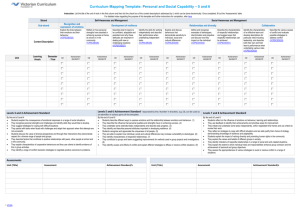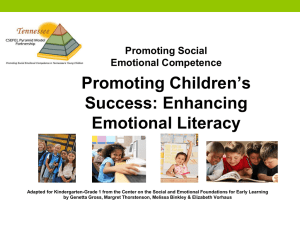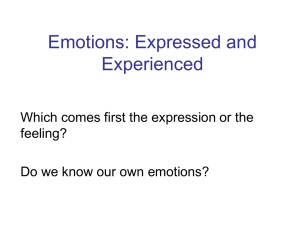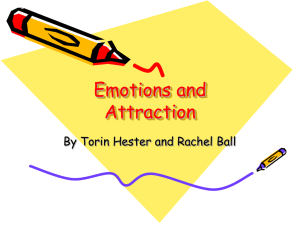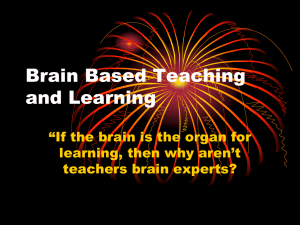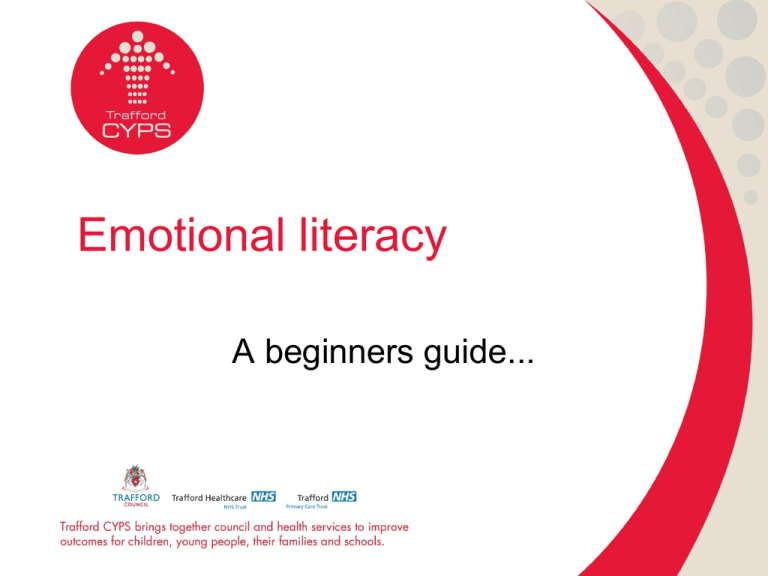
Emotional literacy
A beginners guide...
What’s in a name?
•
•
•
•
•
Emotional literacy
Emotional Health and Wellbeing
Emotional understanding
Emotional intelligence
SEAL – the social and
emotional aspects of learning did not
disappear with the national strategies.
How would you describe the
‘ideal’ pupil ?
• Listens
• Respects people and
property
• Takes responsibility for
their own actions
• Tries to complete
tasks
• Asks for help
• Copes with change
Resilient Behaviour
• Prepared to have a go and cope with
uncertainty
• Works independently but asks for help
when needed
• Has high self-esteem, enjoys success
and learns from mistakes
• Trusts others, relates and plays
sensitively with other pupils
• Takes responsibility
Think of a pupil you work with who does
not seem very resilient
• What indicators are there of this?
• What factors in his/her life may play a
part?
• Are there any signs of resilience?
• What might his/her behaviour be
communicating to you?
• What strengths could be built on to
promote resilience?
• What might be some good approaches to
start with?
Vulnerable behaviour
• Aggressively self-reliant,
emotionally distant or
clingy/controlling/attentionseeking
• Unpopular
• Underachieving
• Sensitive to criticism
• Anxious
Extremely vulnerable
behaviour
•
•
•
•
•
•
•
•
•
Pupil in a constant state of hyper-vigilance
Hyper-sensitive to even implied criticism
A high need to control
Little ability to control emotions
“Random” outbursts
Learning difficulties
Resistant to being taught
Emotionally frozen – rarely shows joy
Self-harm, substance abuse, stealing and
bullying
(Steph Littleton, Educational Psychologist)
RESILIENCE.....
The emotional ability
to -----
• Make the most of
opportunities
• Bounce back after
stress
Building resilience.....
• Promote self esteem and self efficacy
• Encourage the development of secure
relationships
• Provide opportunities to experience
success
• Develop strategies for dealing with setbacks
• Teach emotional literacy
• Have a consistent approach across the
school – develop S.E.A.L and S.E.A.T!
Emotional literacy is....
the ability to recognise,
understand,
handle
and appropriately express
emotions.
(Peter Sharp 2001:nurturing emotional literacy).
Emotional literacy triangle.
thought
behaviour
feeling
I think therefore I am.
Thought – feeling - behaviour
• Understanding how the
brain works enables us to
more easily recognise
and control our emotions.
• Do you control your
emotions?
• Or do your emotions
control you?
Triune brain
fight
flight
• freeze
Limbic system
• Thalamus – receiver of info. Sees ex.
• Hippocampus – perceptions That’s my ex.
• Amygdala – emotional flavour Yeuk!
• Hypothalamus – biochemical regulator No sex
hormones today thank you!
Amygdala
•
•
•
•
Emotional memory storehouse
Seat of passion
Survival
Commands the brain in an emergency – hijacker
1.
2.
3.
Thalamus – receives,
Hippocampus – perceives,
Amygdala – reacts.
Be aware of the power of the amygdala and avoid emotional
hijacks, become more self aware.
Brain functions
HIJACK!
• Thalamus – receives
information.
• Thalamus – receives
information, perceived
as a threat.
•
• BYPASSES THE
THINKING BRAIN
Cortex – thinking
brain decides what to
do.
• Amygdala – decides
on the emotional
flavour/chemical.
• Amygdala – releases
floods of chemicals.
Try the bottle test!
Self awareness.
• Model being self aware by recognising, naming
and managing emotions.
• Respond appropriately to the emotions of others
including parents and peers.
• Think through any attitudes or preconceptions
that might be held which have an impact on your
responses to others.
Self control!!!!!
• Do you respond appropriately when you feel
under pressure?
• COOL ing things down....
1. Calm voice
2. Relaxed body
3. Eye contact
4. Stillness
5. Spatial awareness
Change the thought to change the feeling to change
the behaviour
Contact.....
Sue Pennington
B&A Consultant Trafford LA
Mobile 07702 652486
Email sue.pennington@trafford.gov.uk

